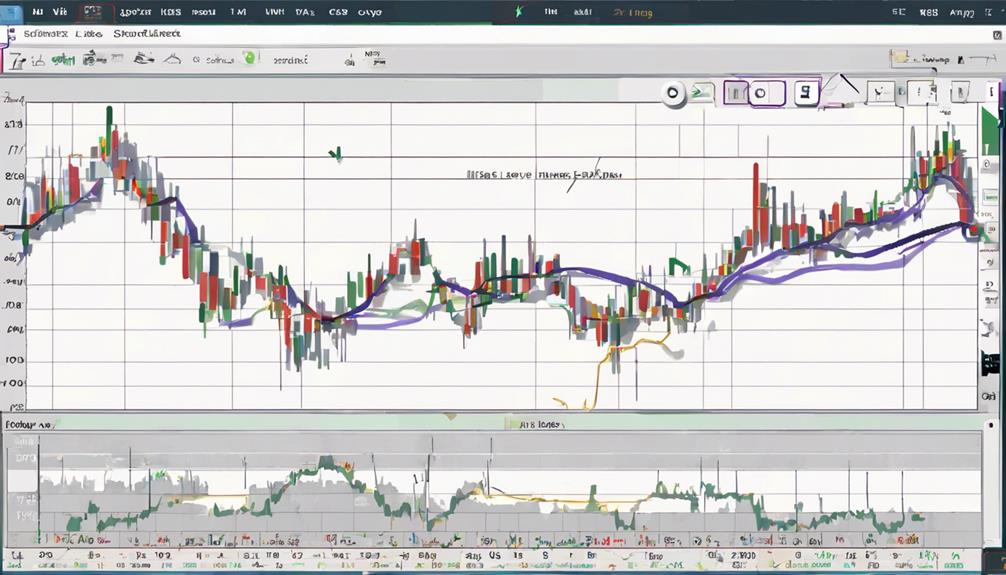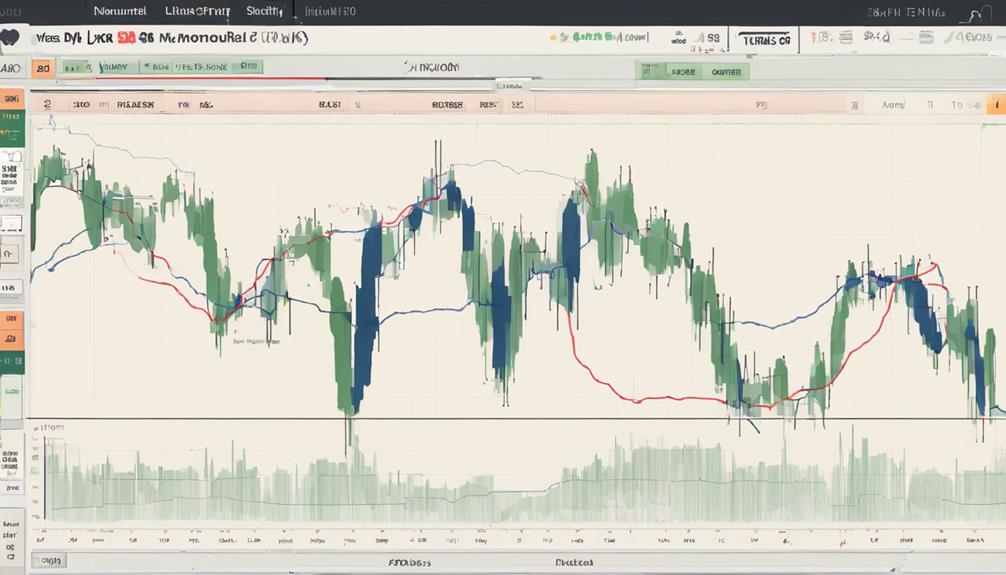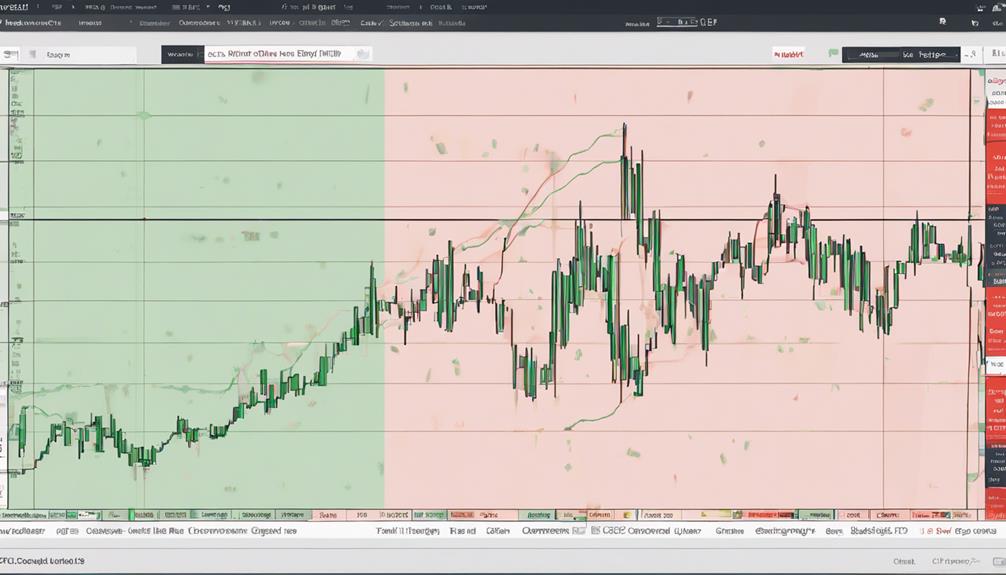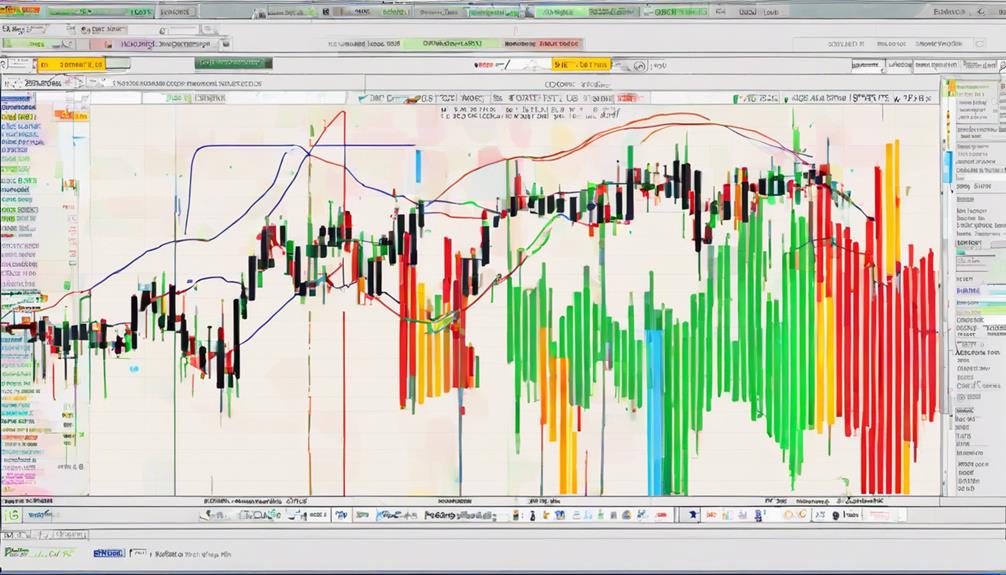Curious about how you can enhance your trading skills by deciphering momentum indicators? Ever wondered how these tools could potentially amplify your market analysis capabilities?
You're about to uncover a straightforward guide that breaks down complex indicators into manageable insights.
Stay tuned to uncover the secrets behind effectively utilizing RSI, ADX, CCI, and MACD to boost your trading strategies and navigate the markets with confidence.
Understanding Different Momentum Indicators
When analyzing momentum indicators such as RSI, ADX, CCI, and MACD, traders gain valuable insights into price momentum dynamics in the stock market.
The Relative Strength Index (RSI) is a popular indicator that helps identify overbought conditions when above 70 and oversold conditions when below 30.
Average Directional Index (ADX) measures trend strength, not direction, aiding traders in determining the strength of a trend.
Commodity Channel Index (CCI) is versatile, measuring price variation from the statistical mean and helping traders spot potential trend reversals.
Moving Average Convergence Divergence (MACD) uses exponential moving averages to signal buy and sell opportunities, with crossovers indicating potential trading points.
Understanding these indicators is crucial for traders seeking profitable opportunities in the market.
Interpreting RSI for Market Analysis

To conduct a thorough market analysis using the Relative Strength Index (RSI), it's essential to interpret the numerical values within the 0 to 100 range to gauge potential overbought or oversold conditions accurately. When analyzing RSI for market insights, consider the following:
- RSI readings above 70 indicate overbought conditions.
- Readings below 30 suggest oversold conditions.
- RSI calculates price movement speed and change.
- Developed by J. Welles Wilder Jr., RSI aids in identifying potential trend reversals.
Understanding these aspects of RSI can help you make informed decisions when interpreting buy or sell signals and implementing trading strategies in your market analysis.
Analyzing Trends With ADX

The Average Directional Index (ADX) serves as a pivotal tool in assessing trend strength, offering traders a clear measure irrespective of the trend's direction. Developed by J. Welles Wilder, this indicator assigns values between 0 and 100, where readings above 25 signify a robust trend in any direction.
Traders frequently combine ADX with other indicators to confirm the strength of a trend and to identify potential reversals in the market. By utilizing ADX, traders can gain valuable insights into the underlying strength of a trend, allowing for informed decision-making in various securities and timeframes.
Understanding ADX can enhance your ability to analyze trends effectively and make well-informed trading decisions.
Utilizing CCI for Trading Signals

Moving from assessing trend strength with ADX, now let's explore how to effectively utilize CCI for identifying trading signals.
The Commodity Channel Index (CCI) is a valuable tool for traders. Here are four key points to help you understand how to use CCI effectively:
- CCI evaluates overbought and oversold conditions.
- It indicates potential price reversals based on deviations from the average price level.
- Values above +100 suggest overbought conditions, while values below -100 indicate oversold conditions.
- Traders employ CCI to gauge trend strength, predict trend reversals, and generate buy or sell signals in various securities.
Deciphering MACD for Strategy Development

Deciphering MACD involves analyzing the convergence and divergence of exponential moving averages to develop effective trading strategies. Traders look for crossovers where the MACD line moves above the signal line, signaling a potential buy opportunity.
By using MACD in conjunction with other indicators, traders can create a comprehensive strategy that accounts for trend changes and momentum shifts in the market. This momentum indicator is valuable for identifying optimal entry and exit points.
Incorporating MACD into your trading strategy can help you make informed decisions and improve your overall trading performance. By understanding how MACD works and its implications for market movements, you can enhance your ability to execute successful trades.
Can You Provide a Simple Guide for Decoding Momentum Indicators in Technical Analysis?
Understanding and decoding momentum indicators in analysis is essential in technical analysis. These indicators include Moving Average Convergence Divergence (MACD), Relative Strength Index (RSI), and Stochastic Oscillator. A simple guide can help traders utilize these tools to make informed decisions in the stock market.
Frequently Asked Questions
How Do You Read a Momentum Indicator?
To read a momentum indicator, analyze current prices compared to past prices for insight into price movement strength. Look for buy/sell signals based on stock momentum. Overbought conditions are indicated by readings above a set level, while oversold conditions are below.
What Is the Most Reliable Momentum Indicator?
When it comes to identifying market shifts, the Moving Average Convergence Divergence (MACD) stands out as the most reliable momentum indicator. Its ability to combine trend-following and momentum elements provides traders with clear buy and sell signals.
What Are the Best Settings for the Momentum Indicator?
For the Momentum Indicator, stick to the 10-day period; it's widely used by traders for short-term momentum analysis. Altering this setting affects sensitivity and responsiveness. Customization lets you match the indicator with your trading style.
What Is the Best Momentum Reversal Indicator?
When looking for the best momentum reversal indicator, the Relative Strength Index (RSI) stands out. It pinpoints overbought and oversold conditions, aiding in predicting trend shifts. RSI, ranging from 0 to 100, complements other indicators for comprehensive analysis.
Conclusion
In conclusion, mastering the art of decoding momentum indicators is essential for successful trading in the stock market. By understanding the intricacies of RSI, ADX, CCI, and MACD, you can unlock valuable insights into price momentum and make informed decisions.
Embrace the challenge of unraveling these indicators to uncover hidden opportunities and enhance your trading strategies. Keep delving deeper into the world of momentum indicators to stay ahead of the curve and maximize your trading potential.


